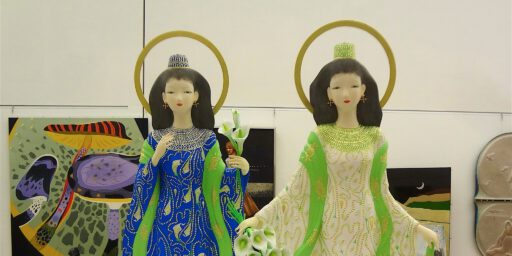文化勲章 Order of Culture
親授式が毎年11月3日の文化の日に皇居宮殿松の間で行われ、天皇から直接授与(親授)される。 1997年(平成9年)から現行の天皇親授に切り替えられたが、それまでは宮中で天皇臨席のもとに内閣総理大臣が勲記と勲章を手交する伝達式の形式で行われていた。そのため、以前は同じく宮中伝達式により授与される旧勲二等と同位に位置づけられていたが、現在では同じく天皇親授により授与される大綬章(旧勲一等)と同位に位置づけられている。 辞退者 • 河井寛次郎(陶芸)- 1955年(昭和30年) 名利を求めない信条を貫いて辞退。河井は自身の作品にも銘を入れないほどこの姿勢に徹底しており、人間国宝や芸術院会員への推薦も同様に辞退している。 • 熊谷守一(洋画)- 1968年(昭和43年) 「これ以上人が来てくれては困る」と辞退。熊谷は孤高の画家として有名で、来客を一貫して避けていた。 • 大江健三郎(小説)- 1994年(平成6年) ノーベル文学賞の受賞発表を受けて急遽文化勲章の授与が決定したが、「民主主義に勝る権威と価値観を認めない」と文化勲章そのものを否定して受章を拒否。 • 杉村春子(舞台演劇)- 1995年(平成7年) 「自分には大きすぎる」「戦争中に亡くなった俳優を差し置いてもらうことはできない」と辞退。 The Order of Culture (文化勲章 Bunka-kunshō) is a Japanese order, established on February 11, 1937. The order has one class only, and may be awarded to men and women for contributions to Japan’s art, literature, science, technology, or anything related to culture in general; recipients of the order also receive an annuity for life. The order is conferred by the Emperor of Japan in person on Culture Day (November 3) each year. The Emperor himself presents the honor at the award ceremony, which takes place at the Imperial Palace on the Day of Culture (November 3). Candidates for the Order of Culture are selected from the Persons of Cultural Merit by the Minister of Education, Culture, Sports, Science and Technology, upon hearing views of all the members of the selection committee for the Persons of Cultural Merit. The Minister then recommends the candidates to the Prime Minister so that they can be decided by the Cabinet. Known to have declined the honor • Kenzaburō Ōe, 1994 Nobel laureate and critic of the Japanese Imperial system • Haruko Sugimura, actress
art-culture.world/articles/nitten-the-shame-of-our-nation-nippon

